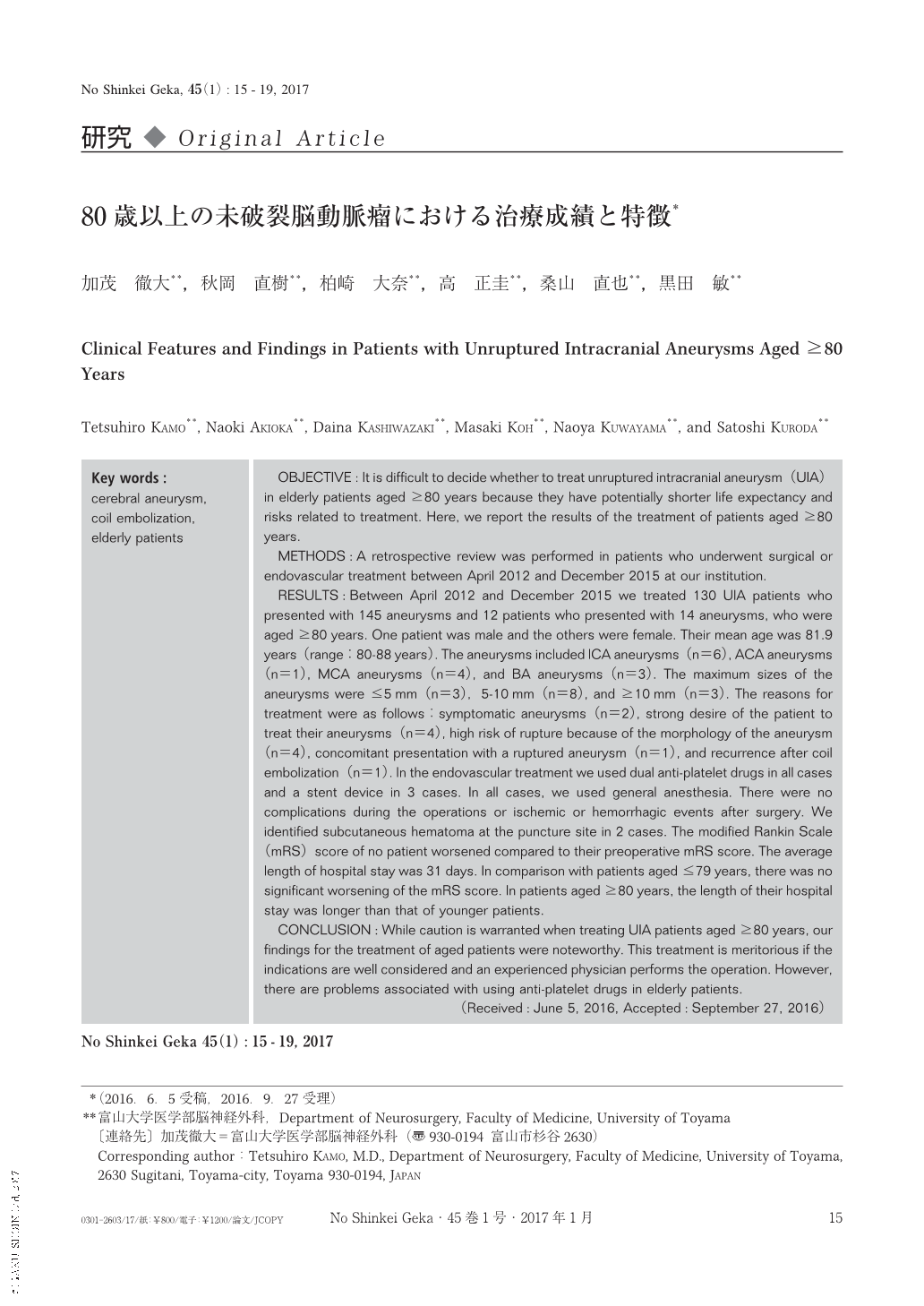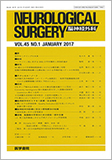Japanese
English
- 有料閲覧
- Abstract 文献概要
- 1ページ目 Look Inside
- 参考文献 Reference
Ⅰ.緒 言
高齢化社会の進行と画像診断技術の向上に伴い,高齢者の未破裂脳動脈瘤の発見および治療の機会が増加している.一方で,高齢者特有の合併症の問題もあり,動脈瘤破裂の危険性および患者の余命を考慮すると,外科的治療介入を行うかどうかの判断は難しいのが現状である.今回われわれは,当院における80歳以上の未破裂脳動脈瘤の治療の現状とその成績について検討を行った.
OBJECTIVE:It is difficult to decide whether to treat unruptured intracranial aneurysm(UIA)in elderly patients aged ≥80 years because they have potentially shorter life expectancy and risks related to treatment. Here, we report the results of the treatment of patients aged ≥80 years.
METHODS:A retrospective review was performed in patients who underwent surgical or endovascular treatment between April 2012 and December 2015 at our institution.
RESULTS:Between April 2012 and December 2015 we treated 130 UIA patients who presented with 145 aneurysms and 12 patients who presented with 14 aneurysms, who were aged ≥80 years. One patient was male and the others were female. Their mean age was 81.9 years(range:80-88 years). The aneurysms included ICA aneurysms(n=6), ACA aneurysms(n=1), MCA aneurysms(n=4), and BA aneurysms(n=3). The maximum sizes of the aneurysms were ≤5mm(n=3),5-10mm(n=8), and ≥10mm(n=3). The reasons for treatment were as follows:symptomatic aneurysms(n=2), strong desire of the patient to treat their aneurysms(n=4), high risk of rupture because of the morphology of the aneurysm(n=4), concomitant presentation with a ruptured aneurysm(n=1), and recurrence after coil embolization(n=1). In the endovascular treatment we used dual anti-platelet drugs in all cases and a stent device in 3 cases. In all cases, we used general anesthesia. There were no complications during the operations or ischemic or hemorrhagic events after surgery. We identified subcutaneous hematoma at the puncture site in 2 cases. The modified Rankin Scale(mRS)score of no patient worsened compared to their preoperative mRS score. The average length of hospital stay was 31 days. In comparison with patients aged ≤79 years, there was no significant worsening of the mRS score. In patients aged ≥80 years, the length of their hospital stay was longer than that of younger patients.
CONCLUSION:While caution is warranted when treating UIA patients aged ≥80 years, our findings for the treatment of aged patients were noteworthy. This treatment is meritorious if the indications are well considered and an experienced physician performs the operation. However, there are problems associated with using anti-platelet drugs in elderly patients.

Copyright © 2017, Igaku-Shoin Ltd. All rights reserved.


